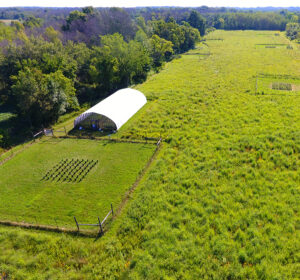Skip to content
Skip to footer
General Facilities
- Office/classroom building with meeting rooms, teaching lab, and computer lab
- Research Lab constructed in 2004
- Service building – machine & wood shop
- Natural areas marked with a permanent grid – Accurately GPS-located in 2005
- Boardwalk to the center of the Cedarburg Bog – Reconstruction completed in 2009
- 14 aquatic mesocosms (200 gallon tanks)
- Several small boats, canoes, and trailers
- Global Positioning System equipment
- Extensive map and aerial photo collection
- Geographic Information System (GIS) for the Field Station area
Housing
- The Farm House for researcher & student housing – The kitchen was remodeled and modernized in 2021
- The Researcher House for longer stays by individuals and groups
Hydrology, Meteorology & Phenology
- Extensive array of environmental sensors recorded by a digital data logger
- Phenological observation garden & native plant observations maintained
- Lysimeter pit in the old-growth forest
- Transect of piezometers from upland to Bog – new piezometers added in 2013
Animal Ecology & Behavior
- Sound room facility for studies of frog communication and vocalizations
- Large outdoor experimental aviary
- Live traps & animal holding facilities
- Extensive arrays of bird nest boxes
- Flying squirrel nest boxes
- Insect collection, small mammal & bird study skins
Plant Ecology
- Herbarium & Plant lists
- Plant identification lab
- Vegetation sampling & surveying equipment
- Fenced deer exclusion plots in various plant communities and habitats
Experimental Garden
- 9 fenced research gardens
- 1 acre Experimental Garden with water & electricity
- A 30’ x 60’ screen house for studies of pollination biology
- A screen house for studies of plant-insect interactions
- Greenhouse & garden building
- High capacity irrigation well
- Farm & cultivating machinery

